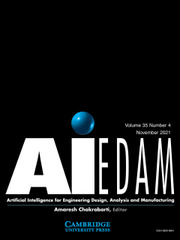Crossref Citations
This article has been cited by the following publications. This list is generated based on data provided by Crossref.
Paszkowicz, Wojciech
2009.
Genetic Algorithms, a Nature-Inspired Tool: Survey of Applications in Materials Science and Related Fields.
Materials and Manufacturing Processes,
Vol. 24,
Issue. 2,
p.
174.

